When the Toyota Prius was released in 1997, it was the first mass-produced hybrid car.
These days, the Prius remains a popular vehicle choice due to its environmentally-friendly hybrid electric motor, comfortable driving, great battery life, and advanced technology.
But how many miles does a Prius last? Read on to find out more about the durability of the Prius.
The Toyota Prius can last up to 250,000 miles in good condition.
So if you drive an average of 15,000 to 20,000 miles annually, you can get about 12 to 16 years out of your well-maintained Prius.
Car enthusiasts tend to doubt the durability of a hybrid car and believe that this type of car does not get the same mileage as other cars with fuel engines.
With a regularly maintained Prius, you should be able to get between 200,000 to 250,000 miles out of it before you need to start replacing parts.
The lifespan of a Prius will depend on two things:
The brakes on a Prius can last anywhere from 30,000 to 70,000 miles.
However, if you are frequently driving in traffic where you have to brake a lot, the brakes could wear down faster than 30,000 miles.
With good tire maintenance (including alignment and rotation) and careful driving, the tires of a Prius can last up to 60,000 miles.
According to devoted Prius owners, if you change the transmission regularly and flush the transmission every 60,000 miles, it can last anywhere from 100,000 miles to 200,000 miles.
Your spark plugs can last around 100,000 miles or more before they need replacement.
The lifespan of the batteries depends on various factors, like how hard you drive and how regularly you service your Prius.
Toyota reports that a battery will last between 100,000 and 150,000 miles, or about 8 to 10 years.
Of course, this is just a general estimate, and some Prius drivers have gotten a lot more mileage and years out of their battery.
ALSO READ: Battery On Prius: How Long Do They Last?
Based on online reviews, it is estimated that a Toyota Prius may show signs of rust within six years.
The areas of the car most prone to rust are:
These components are prone to rust because of their exposure to the road.
Stones that fly up can chip away at the paint, which will remove the protection and expose the car to the elements.
You can take certain steps to rust-proof your Prius, which will reduce the risk of rust.
Now that you know the Toyota Prius is one of the most durable and long-lasting hybrid cars out there, how does it compare to similar cars?
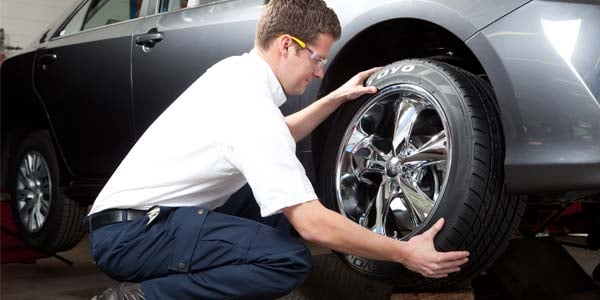 Ford C-Max
Ford C-MaxThe Ford C-Max is a zippy car but has lower mileage than the Toyota Prius, averaging a maximum mileage of about 200,000 miles – which is 50,000 miles less than the Prius.
The Toyota Prius is also more affordable to maintain than the Ford C-Max.
The average lifespan of the Chevrolet Volt is about 200,000 miles, which is 50,000 miles less than the Prius.
The Prius also has more affordable running costs with regular maintenance, making it the better choice for a hybrid car.
2022 Chevy VoltThe Nissan Leaf is an electric car, not a hybrid; however, these cars still get compared quite frequently.
On average, the Nissan Leaf gets about 150,000 miles, which is 100,000 miles less than the Prius.
The Toyota Prius’ popularity goes beyond its fuel efficiency. It is renowned for its reliability and has scored Reliability Ratings of 4.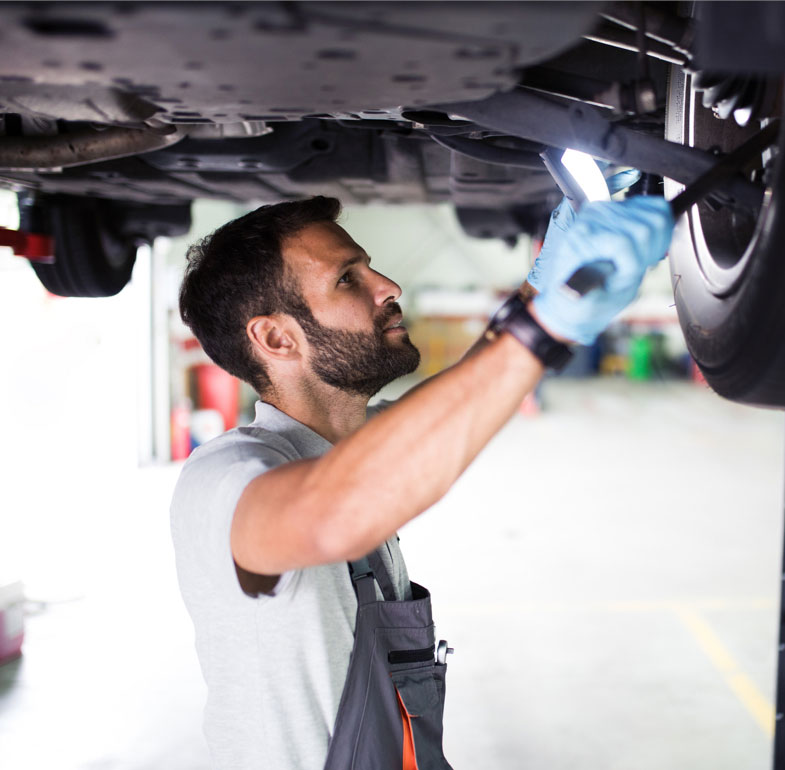 5 out of 5.
5 out of 5.
The Prius V and the Prius C have also been heralded as one of the top 10 most dependable small-sized cars in a Vehicle Dependability Study conducted in 2019.
Sadly, not every year has been a good year for the Toyota Prius.
The 2011 model gave a lot of issues, with plenty of unscheduled repairs required.
The reason for these issues was the engine oil consumption of the vehicle.
Owners of the 2011 model reported that the engine was guzzling oil, as much as 1 quart per 1,000 miles.
If left unnoticed, the vehicle would have to go in for a major repair, and mechanic’s quotes were incredibly expensive – up to $4,000 in repair costs.
The 2011 model also had some major issues with headlights and brakes.
The brakes would suddenly disengage while driving over an uneven surface, and the headlights would frequently burn out.
On the upside, the 2019 Prius model has received sterling reviews and has been considered the best year for the Toyota Prius so far.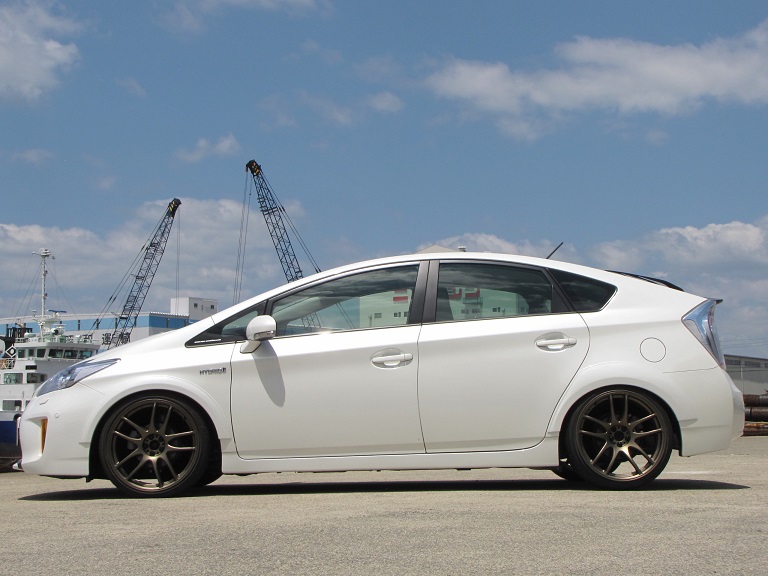
Below are some common problems reported for the Toyota Prius:
There have been a couple of recalls over the years since production of the Prius commenced in 1997.
Here are the model years and the number of recalls for that model, in chronological order:
As you can see, most recalls occurred in 2010.
This was because of issues with the brakes.
The Toyota Prius is not expensive to maintain and service.
On average, the maintenance of the Prius costs $408 a year.
The Plug-In hybrid has the lowest service cost at $364.
The Prius C will cost you $383, and the Prius V will cost you $437 on average each year.
Below we have listed the Prius models and some common repairs each model requires, as well as what you can expect to pay for the repairs on average.
Although the Toyota Prius has a good lifespan, several factors influence this lifespan.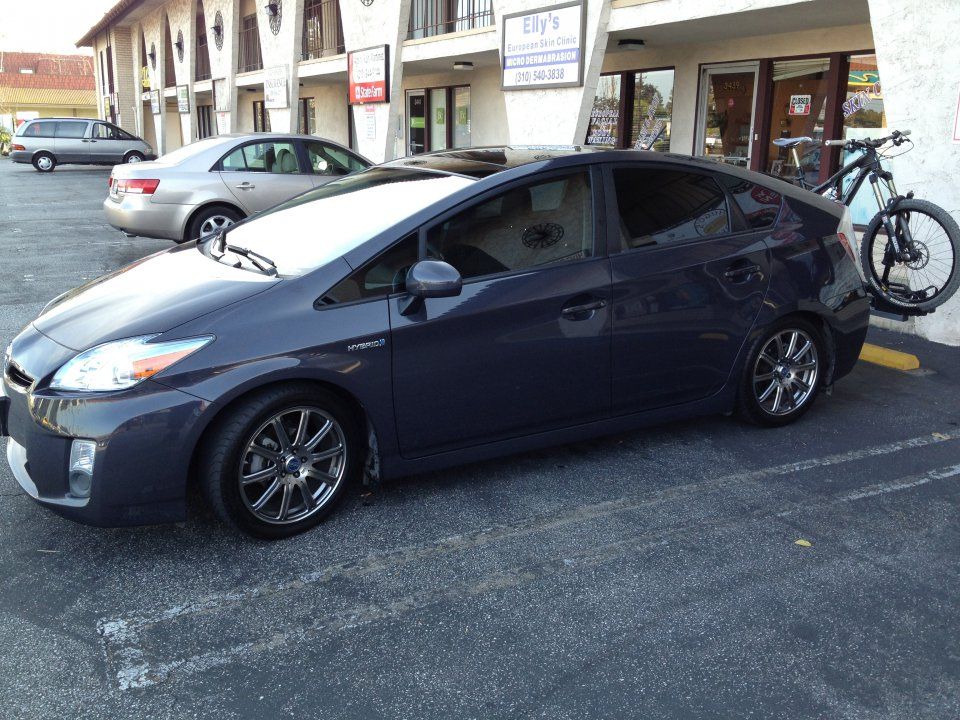
There are some things you can do to increase it even more and get the highest mileage possible:
Yes, the Toyota Prius is worth it.
If the 147,500 people in America that buys a Prius each year is not enough to convince you that buying a Prius is worth it, then you should also consider that the Prius is produced by one of the top car manufacturers in the world.
Toyota currently produces 23 hybrid-powered cars, and each of these cars is based on the power unit of the Prius.
The Prius is reliable, has great fuel efficiency, has low maintenance costs, and will save you a lot of money with the ever-increasing fuel prices.
If you are able to find a high-mileage Prius with a proper service record, then it is probably a good investment.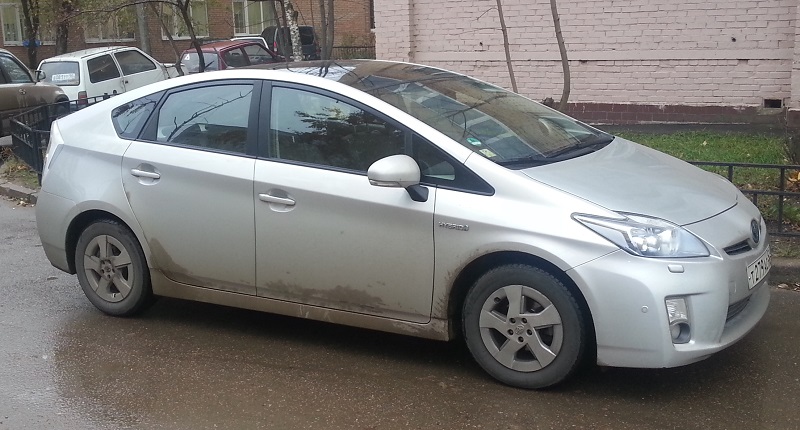
A second-hand Prius that has been taken care of can still get a lot of mileage.
If you find a Prius with a lot of miles, make sure to check the car’s condition, find out how many previous owners it has had, its service history, and any accidents it may have been in.
On average, a Toyota Prius will last about 250,000; however, one Reddit user reported coming across a 2006 Prius with 520,000+ miles!
The cost to replace an engine, including labor costs, will be about $7,000 for a new engine.
A secondhand engine replacement will cost about $5,000.
On average, the battery of a Prius will last about 150,000 miles or 10-years.
This will depend on how hard the vehicle has been driven and how regularly it has been serviced.
The Toyota Prius may be a hybrid car, but these cars have an excellent lifespan if taken care of properly.
Although most Prius’ will last about 250,000 miles, with proper care and maintenance, it can go up to 300,000 miles with ease.
JavaScript is disabled. For a better experience, please enable JavaScript in your browser before proceeding.
1 - 18 of 18 Posts
1 - 18 of 18 Posts
Top
Consumer disputes over the age of tires have not subsided for several seasons. Buyers are excited that the warranty period for tires is limited to 5-6 years according to GOST, and after the expiration of this period, the rubber becomes unusable.
Is this really the case, read this article.
Manufacturers of most brands on their products set Shelf life is 5 years and service life is also 5 years .
The shelf life of a tire is the period during which it retains its performance when properly stored.
The end of this period does not mean that the tires have become unusable . A shelf life of 5 years is given by manufacturers because, by law, they cannot set a shelf life higher than the service life. Tires over 5 years of storage cannot be called damaged or defective, their technical characteristics may be slightly reduced. American researchers argue that the period of storage of "shoes" must be at least 10 years. Experts from Germany are sure that it cannot exceed 6 years.
The expiration date of tires is the warranty period during which the manufacturer is responsible for the quality and condition of the tire if it was used for its intended purpose without violating the operating rules.
According to Russian legislation (GOST 5513, GOST 4754-97) , the service life of tires is 5 years from the date of manufacture.
How can I find out the date of manufacture of tires?
You can find out the age of tires by a special DOT code. Tires manufactured after 2000 in the DOT code contain two pairs of numbers, where the first pair indicates the week number of the year, and the second pair indicates the year. Earlier tires before 2000 have 3 numbers in their composition, where the first two digits are the week number, and the last one is the year (see the transcript in the photo).
Determination of the average shelf life of a tire according to GOST and operating conditions.
- The symbol ZR denotes tires for high-speed cars. They are recommended to be used at speeds over 240 km/h. up to 6 years
- Tires with the H symbol are used at a maximum speed of 210 km/h. within 5 years.
- The sign S symbolizes the maximum permissible speed of 180 km/h. and operational period of 4-5 years.
Most tire manufacturers do not agree that tire life is limited to 5 years. Each company has its own opinion on this matter. We analyzed several of them and the information they posted on their official websites.
Michelin
The French tire manufacturer Michelin has become famous for its active fight against the perception of the rapid aging of tires as a perishable product. Her information campaign "Tires Are Not Bananas" created a lot of noise in the automotive environment. According to the representative office, several test trials were carried out in Saudi Arabia, South Korea and Germany. As a result of testing, no difference was found between new tires and tires stored for 3 years. They were tested for various characteristics such as rolling resistance, high speed durability, etc. Tires with a year life were approximately equal in performance to 10-year unused tyres.
Michelin focuses the attention of car owners on the fact that tires are not a perishable product, their shelf life is not as important as the service life is important, starting from the date the tires are installed on the rims. It is from this moment that the tire is subjected to all tests: pressure, temperature changes, wear, contact with uneven and sharp coatings, etc.
Continental
On the Russian official website of Continental, we found the following information on the expiration dates of tires.
“When a tire is stored in the correct position and under the recommended conditions, it will not lose its original balanced performance for 5 years from the date of manufacture of the tire.
A properly maintained, unused tire less than 5 years old can be sold as a new tire and used normally.
Continental recommends replacing all tires (including spares) with a sidewall date greater than 10 years.
Nokian
The following information is posted on the Nokian official website:
“Tire life is not defined by law, but tires can only be considered “new” if they have been manufactured within the last five years. The recommended service life of tires is six years and the recommended maximum period is 10 years.
The opinion of our specialists, based on many years of experience, coincides with the opinion of manufacturers: the shelf life is 5 years + the service life is up to 10 years. Moreover, more "adult" tires, in our opinion, are of better quality.
To keep tires as long as possible, they are stored in compliance with all rules and recommendations. The main condition is a cool, ventilated, darkened room away from oils, paints, ozone, and heat sources.
Rubber products tend to lose their performance over the years. To prevent and slow down this process, manufacturers add polymers to the rubber compound. They prevent oxidative processes that occur due to the interaction of protectors with oxygen and ozone.
The following are the main conditions for the proper storage of tires in accordance with GOST 24779-81:
Maintaining a constant regime without sudden jumps, slight temperature fluctuations from -30°С to +35°С are allowed;
Provide a low humidity level of 50-80% in a dry, ventilated cool room;
Avoid direct sunlight, use darkened hangars, shield heat sources;
Keep away from sources of heat;
Tires should not come into contact with corrosive, copper materials.
Avoid kinking, loading or positioning on an uneven surface.
Avoid contact with oils, organic solvents, acids, alkalis, fuels and lubricants on the tire surface. It is forbidden to lay tires on a wet and dirty surface.
In the warm season, when storing tires outside, they should be covered with light-tight material and raised above ground level to ensure ventilation and prevent the occurrence of the greenhouse effect.
Storage on reflective, light and heat absorbing surfaces is prohibited.
Keep away from chemicals, oils, paints, open flames, electric motors that produce ozone.
Used tires must be washed and dried.
Tires without rims should be stored upright.
The service life depends on many factors: the load on the car, the quality of the roads, the driving style, the distance traveled, tire damage, etc. To increase their service life, follow these rules:
Check tire pressure every 2-3 weeks. With reduced pressure, tire wear increases by the equivalent of a % reduction. For example, a 15% reduction in pressure can result in a 15% reduction in service life. Inflated tires are less scary.
The wear of the front tires is always significantly higher than the rear ones, so it is recommended to swap them after some time, carefully watching the direction of the tread pattern and the direction of rotation.
Proper alignment of tires in relation to rims. If the direction is not the same, then performance is significantly reduced.
To prevent damage to the sidewalls of tires, avoid close proximity to curbs and high ledges.
Wash off dirt from the surface of the rubber and from deep grooves with special cleaning agents.
Adhere to an even driving style without harsh brakes and quick starts.
Do not overload the car beyond the norm. 20% excess weight leads to a 30% loss of tire life.
Keep the wheels balanced and check the alignment angles annually.
The main condition for a long tire life is:
- high quality products,
- careful operation,
- proper storage of tires in the off-season,
- timely diagnosis.
The age of tires in standard storage is a minor non-determining factor that should not be taken into account when buying them.
Previous article Next article
Car make: Brand Acura Alfa Romeo Aston Martin Audi Bentley bmw Brilliance Buick byd Cadillac changan Chery Cheryexeed Chevrolet Chrysler Citroen Daewoo Daihatsu Datsun Dodge Dongfeng Ds Dw FAW Ferrari fiat Ford Foton gac Geely Genesis Great Wall hafei Haima Haval hawtai Honda Hummer Hyundai Infiniti Iran khodro Isuzu Iveco Jac Jaguar Jeep Kia Lamborghini Lancia Land Rover Lexus Lifan Lincoln lotus Maserati Maybach Mazda Mercedes MG Mini Mitsubishi Nissan Opel Peugeot Pontiac Porsche Ravon Renault Rolls Royce Rolls Royce Rover Saab seat Skoda Smart ssangyong Subaru Suzuki Tesla Toyota Volkswagen Volvo Vortex (tagaz) ZAZ Zotye AZLK VAZ GAS OKA TaGAZ UAZ
Model: Model 4Runner Allex/Corolla Runx Allion/Premio Alphard Altezza Altezza Gita Aristo Auris Auris Touring Sports Avensis Avensis Verso Aygo bB Belta Brevis C-HR Caldina Camry carina Celica Corolla Corolla Fielder Corolla Verso Corona Premio duet echo Estima F. J. Cruiser Fortuner funcargo Gaia GT 86 Harrier Hiace Highlander Hilux Hilux pickup Hilux Surf Ipsum IQ Isis East Kluger Land Cruiser 100 Land Cruiser 100 GX Land Cruiser 100 VX Land Cruiser 200 Land Cruiser 80 Land Cruiser 90 Land Cruiser Prado Lite Ace Noah Lite Ace/Town Ace Mark II Mark II Blit Mark II Qualis Mark X MR2 noah passo Picnic Platz Previa Prius Prius Plus Proace progress Ractis Raum RAV4 sequoia Sienna Success/Probox Supra Tacoma Tundra Urban Cruiser Venza Verso Verso-S Vista Vista Ardeo Vitz Will Cypha Will Vi WiLL VS Wish Yaris Yaris Verso
Modification: Modification1. 5 VVT-i Hybrid1.8 VVT-i hybrid1.8 VVT-i Hybrid
Year: Year19992000200120022003200420052006200720082009201020112012201320142015201620172018201920202021
Body: BodyXW10 SedanXW20 HatchbackXW35 HatchbackXW3a HatchbackXW3P HatchbackXW5 Hatchback
| Engine | Year | Body | Tires | Discs | Tires for tuning | Tuning wheels | Other |
|---|---|---|---|---|---|---|---|
| 1.5 VVT-i Hybrid | 1999 | XW10 Sedan | Factory equipment 175/65 R14 Replacement options- | main parameters PCD:4/100 Dia:54. 5.5x14 ET 45 Replacement options- | Front axle / Rear axle - | Front axle / Rear axle - | - |
| 2000 | XW10 Sedan | - | |||||
| 2001 | XW10 Sedan | - | |||||
| 2002 | XW10 Sedan | - | |||||
| 2003 | XW10 Sedan | - | |||||
| 2003 | XW20 Hatchback | Factory equipment 185/65 R15 195/55 R16 Replacement options- | main parameters PCD:5/100 Dia:54.1 Nut 12*1.5 Factory equipment6x15 ET 45 6x16 ET 45 Replacement options- | - | |||
| 2004 | XW10 Sedan | Factory equipment 175/65 R14 Replacement options- | main parameters PCD:4/100 Dia:54. 5.5x14 ET 45 Replacement options- | - | |||
| 2004 | XW20 Hatchback | Factory equipment 175/65 R14 185/65 R15 195/55 R16 Replacement options195/60 R15 205/50 R16 | main parameters PCD:5/100 Dia:54.1 Nut 12*1.5 Factory equipment 5. 6.5x15ET40 7x15 ET 40 6.5x16ET40 7x16 ET 40 7.5x16ET 40 | - | |||
| 2005 | XW20 Hatchback | Factory equipment 185/65 R15 195/55 R16 Replacement options195/60 R15 205/50 R16 | main parameters PCD:5/100 Dia:54.1 Nut 12*1.5 Factory equipment6x15 ET 45 6x16 ET 45 Replacement options 6. 185/65 R15 195/55 R16 Replacement options- | main parameters PCD:5/100 Dia:54.1 Nut 12*1.5 Factory equipment6x15 ET 45 6x16 ET 45 Replacement options- | - | ||
| 1.8 VVT-i hybrid | 2016 | XW5 Hatchback | Factory equipment 195/65 R15 215/45 R17 Replacement options- | main parameters PCD:5/100 Dia:54. 6.5x15ET40 7x17 ET 50 Replacement options- | Front axle / Rear axle - | Front axle / Rear axle - | - |
| 2017 | XW5 Hatchback | - | |||||
| 2018 | XW5 Hatchback | - | |||||
| 2019 | XW5 Hatchback | - | |||||
| 2020 | XW5 Hatchback | - | |||||
| 2021 | XW5 Hatchback | - | |||||
| 1.8 VVT-i Hybrid | 2009 | XW3a Hatchback | Factory equipment 195/65 R15 215/45 R17 Replacement options- | main parameters PCD:5/100 Dia:54.1 Nut 12*1.5 Factory equipment6x15 ET 45 7x17 ET 50 Replacement options- | Front axle / Rear axle - | Front axle / Rear axle - | - |
| 2009 | XW3P Hatchback | Factory equipment 195/65 R15 195/60 R16 215/45 R17 Replacement options205/55 R16 205/50 R17 | main parameters PCD:5/100 Dia:54.1 Nut 12*1.5 Factory equipment6x15 ET 45 6x16 ET 45 Replacement options6.5x16ET45 6.5x17ET45 7x17 ET 45 | Batteries | |||
| 2010 | XW3a Hatchback | Factory equipment 195/65 R15 215/45 R17 Replacement options- | main parameters PCD:5/100 Dia:54. 6x15 ET 45 7x17 ET 50 Replacement options- | - | |||
| 2010 | XW3P Hatchback | Factory equipment 195/65 R15 195/60 R16 215/45 R17 Replacement options205/55 R16 205/50 R17 | main parameters PCD:5/100 Dia:54.1 Nut 12*1.5 Factory equipment6x15 ET 45 6x16 ET 45 Replacement options 6. | Batteries | |||
| 2011 | XW3a Hatchback | Factory equipment 195/65 R15 215/45 R17 Replacement options- | main parameters PCD:5/100 Dia:54.1 Nut 12*1.5 Factory equipment6x15 ET 45 7x17 ET 50 Replacement options- | - | |||
| 2011 | XW3P Hatchback | Factory equipment 195/65 R15 195/60 R16 215/45 R17 Replacement options205/55 R16 205/50 R17 | main parameters PCD:5/100 Dia:54. 6x15 ET 45 6x16 ET 45 Replacement options6.5x16ET 45 6.5x17ET45 7x17 ET 45 | Batteries | |||
| 2012 | XW35 Hatchback | Factory equipment 195/65 R15 Replacement options- | main parameters PCD:5/100 Dia:54.1 Nut 12*1.5 Factory equipment6x15 ET 45 Replacement options- | - | |||
| 2012 | XW3a Hatchback | Factory equipment 195/65 R15 215/45 R17 Replacement options- | main parameters PCD:5/100 Dia:54.1 Nut 12*1.5 Factory equipment6x15 ET 45 7x17 ET 50 Replacement options- | - | |||
| 2012 | XW3P Hatchback | Factory equipment 195/65 R15 195/60 R16 215/45 R17 Replacement options205/55 R16 205/50 R17 | main parameters PCD:5/100 Dia:54. 6x15 ET 45 6x16 ET 45 Replacement options6.5x16ET45 6.5x17ET45 7x17 ET 45 | Batteries | |||
| 2012 | XW3P Hatchback | Factory equipment 195/65 R15 Replacement options- | main parameters PCD:5/100 Dia:54.1 Nut 12*1.5 Factory equipment6x15 ET 45 Replacement options- | - | |||
| 2013 | XW35 Hatchback | - | |||||
| 2014 | XW35 Hatchback | - | |||||
| 2015 | XW35 Hatchback | - | |||||
| 2016 | XW35 Hatchback | - |
In order to find out what tires to put on Toyota Prius - select year of age. and select engine size. You will be presented with a list of recommended sizes for your machine.
This list provides factory recommended tire sizes for Toyota Prius and tire replacement options. So, in order to choose and buy tires for Toyota Prius, just click on the desired size, where you will be offered a huge selection of car tires of various brands of appropriate sizes.